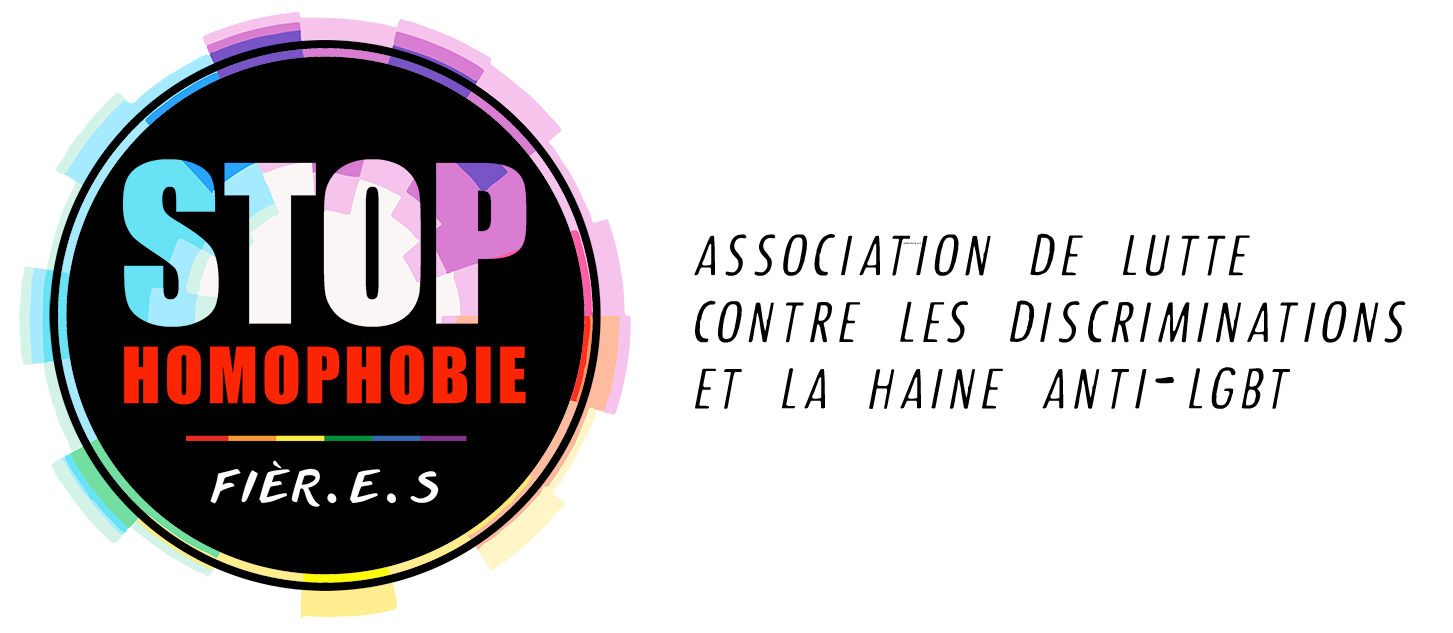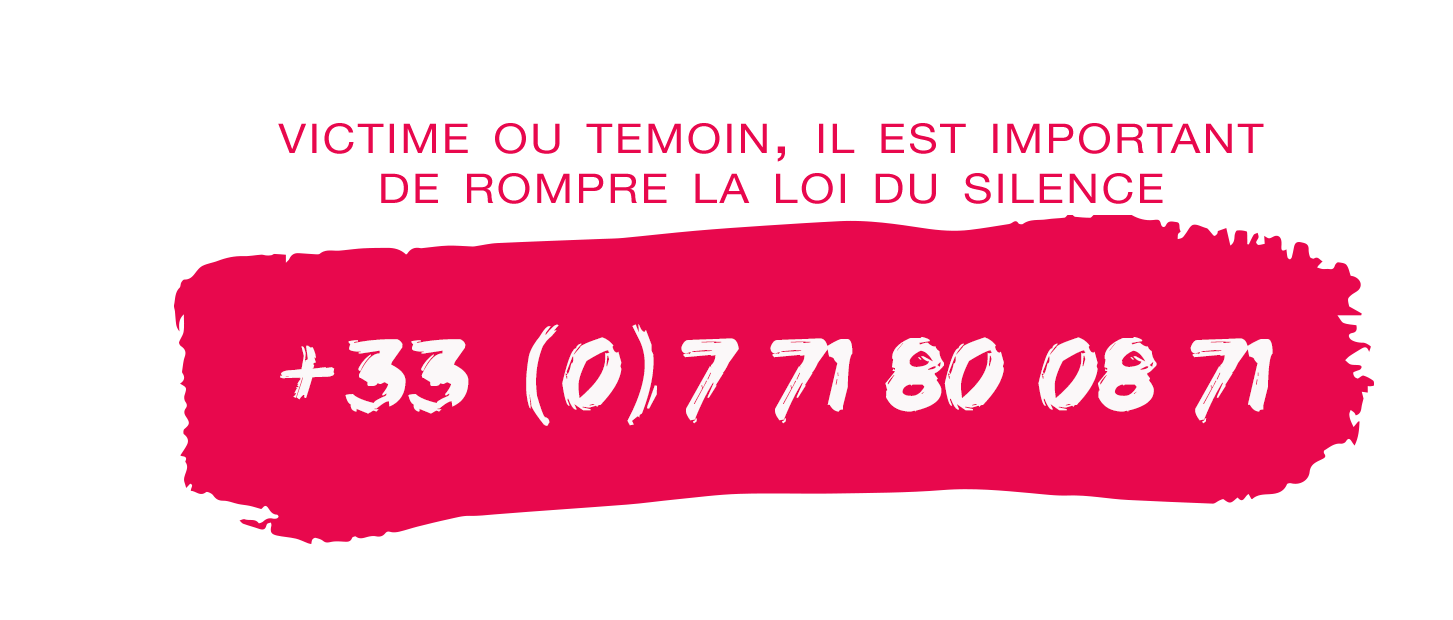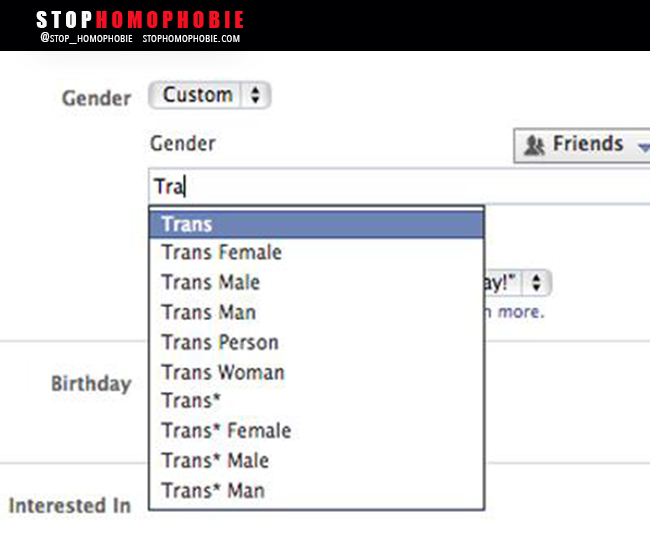>> Facebook Expands Gender Options for Trans and Gender-Nonconforming Users
Les abonnés anglophones de Facebook ne seront plus seulement limités à «homme» ou «femme» pour renseigner sur leur genre, a annoncé jeudi le réseau social en ligne, qui a ajouté de nouvelles options comme «transsexuel» ou encore «intersexuel» dans la section «informations générales».
Outre le genre, les abonnés ont aussi la possibilité de choisir le pronom personnel par lequel ils voudraient être interpellés dans les messages. À côté des classiques «lui/il» et «elle», il y aura désormais «on», jugé plus neutre.
«Si pour beaucoup ces changements n’ont pas beaucoup d’importance, pour ceux qui en ont souffert c’est quelque chose d’important», écrit Facebook dans un message sur sa page Diversité, qui affiche une photo du drapeau arc-en ciel, étendard de la communauté homosexuelle et transgenre, flottant sur le campus du groupe dans la Silicon Valley.
«Nous voyons ces évolutions comme un moyen supplémentaire pour faire de Facebook un lieu où les gens peuvent exprimer librement leur identité», ajoute le réseau social.
Facebook indique avoir collaboré avec des associations de défense des droits des lesbiennes, gays, bisexuels et transgenre pour créer ces nouvelles options qui peuvent être trouvées dans la catégorie «autres».
Pour l’instant, les options ne sont disponibles que pour les internautes utilisant le réseau en anglais américain, mais Facebook prévoit de les étendre à d’autres régions dans l’avenir.
>> In addition to being able to select from « male, » « female, » or « gender-neutral » pronouns, users can now enter their gender as they see fit. « Androgyne, » « Pangender, » « Bi-gender, » « Agender, » « Trans Woman, » « Transsexual, » « Trans* Man, » « Cis woman, » and dozens of other gender-identifying options are now available to users by selecting the « custom » option in the profile’s « Basic Information » section. The new gender identity listing also has a built-in privacy setting, allowing users to determine who is able to view their gender identity when looking at their profile.
It’s no secret that Facebook has struggled with a pronoun problem. With only male and female options available when it came to pronouns, trans individuals were often forced to label themselves in categories that simply didn’t fit. Gendered announcements like, « John updated his profile, » or « Jane updated her profile, » are commonplace, and until now, were the only options available — unless someone was willing to jump through a series of technological hoops.
« This new feature is a step forward in recognizing transgender people and allows them to tell their authentic story in their own words, » GLAAD President Sarah Kate Ellis said in a blog post. « Once again, Facebook is on the forefront of ensuring that the platform is safe and accessible to all of its LGBT users. »
GLAAD’s former Vice President of Campaigns & Programs Allison Palmer added, « Facebook users from across the country have been asking for the ability to reflect their gender accurately, and today Facebook showed they have been listening. Facebook’s new gender options will make a difference to many transgender and gender nonconforming users, who are now empowered to accurately describe their own identities on the platform. » Palmer worked together with Facebook and GLAAD staff in the development and rollout of these new features.
Below is the announcement, straight from the Facebook Diversity page:
When you come to Facebook to connect with the people, causes, and organizations you care about, we want you to feel comfortable being your true, authentic self. An important part of this is the expression of gender, especially when it extends beyond the definitions of just “male” or female.” So today, we’re proud to offer a new custom gender option to help you better express your own identity on Facebook.
We collaborated with our Network of Support, a group of leading LGBT advocacy organizations, to offer an extensive list of gender identities that many people use to describe themselves. Moreover, people who select a custom gender will now have the ability to choose the pronoun they’d like to be referred to publicly — male (he/his), female (she/her) or neutral (they/their).
We also have added the ability for people to control the audience with whom they want to share their custom gender. We recognize that some people face challenges sharing their true gender identity with others, and this setting gives people the ability to express themselves in an authentic way.
The new custom gender option is available to everyone who uses Facebook in U.S. English.
AFP


















